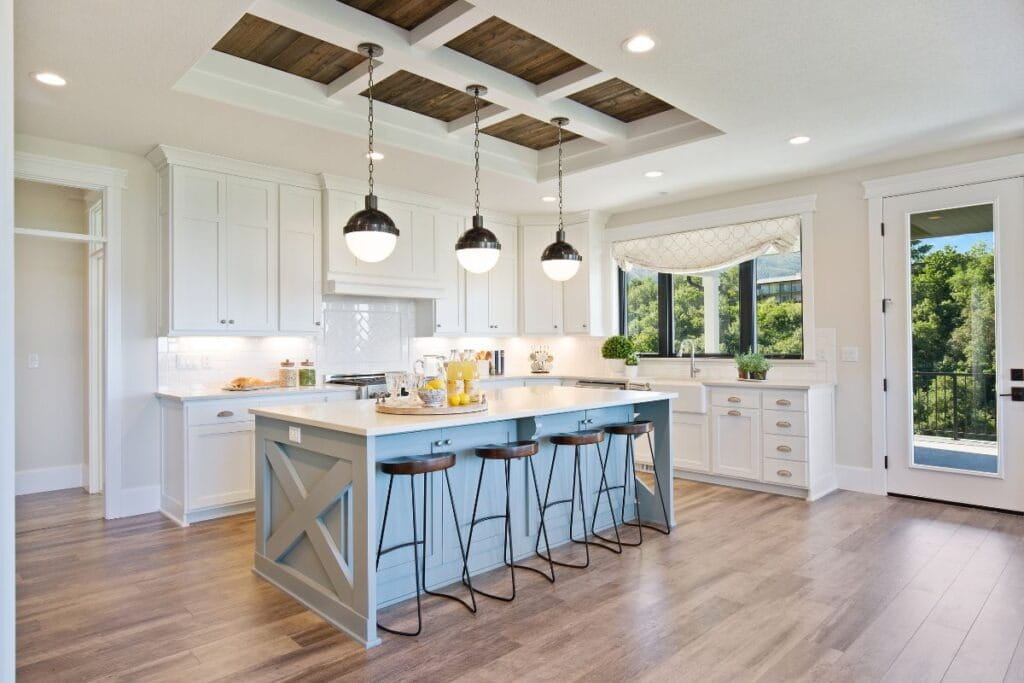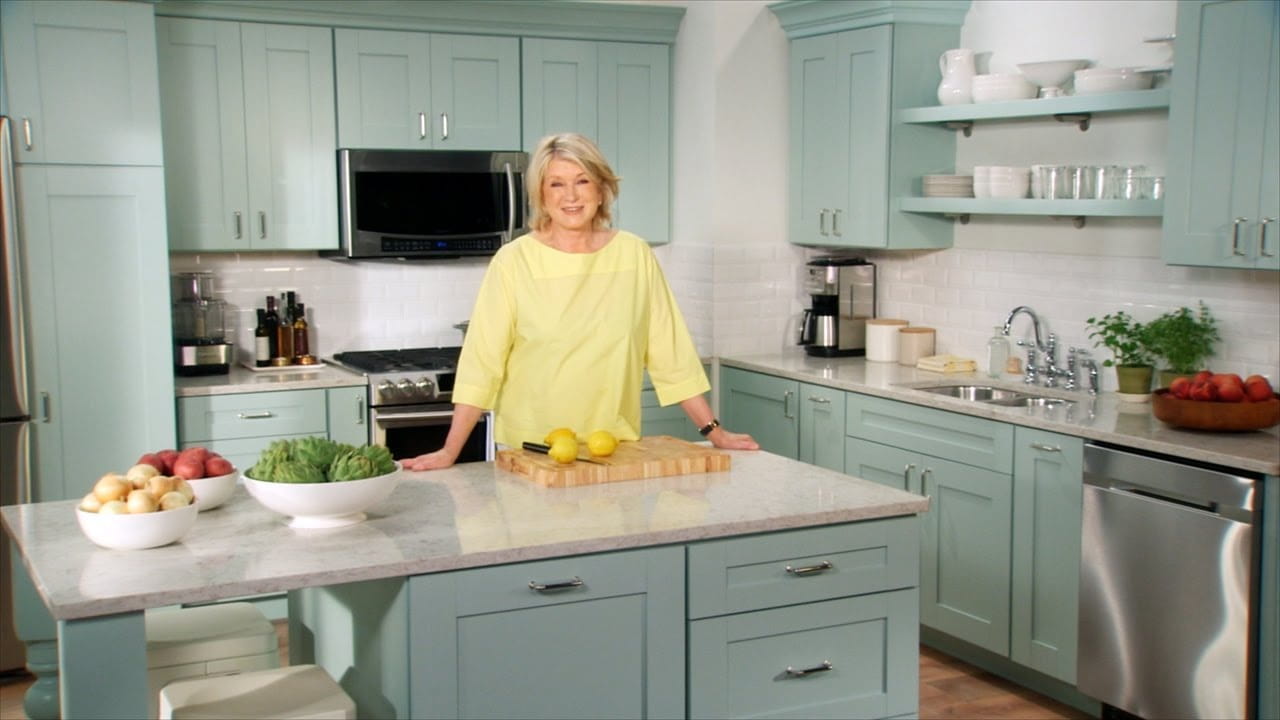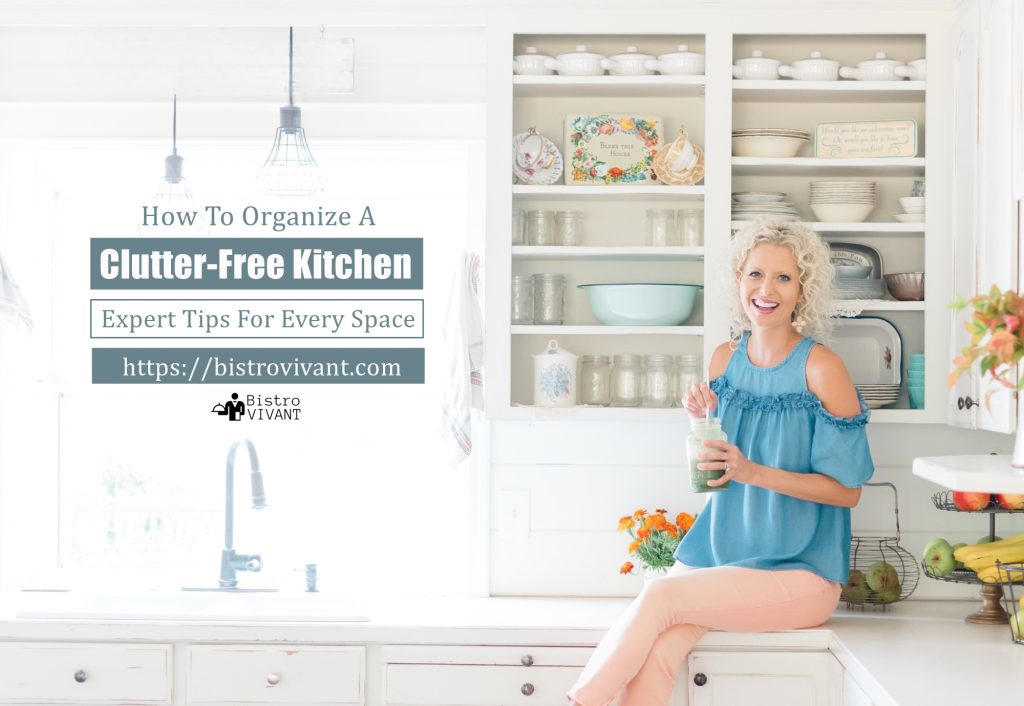Most of us dream of a clutter-free kitchen where everything has its place, making cooking and meal prep a breeze. In this guide, you will discover expert tips for every inch of your kitchen, from cabinets to countertops. Whether you’re dealing with a small apartment kitchen or a spacious culinary haven, these strategies will help you maximize space and maintain a tidy environment where you can enjoy creating delicious meals. For more inspiration, check out 6 Tips for Creating a Functional & Clutter-Free Kitchen.
Key Takeaways:
- Decluttering: Before organizing your kitchen, declutter by getting rid of items you no longer use or need. This will create more space and make it easier to organize effectively.
- Zones and Categories: Create zones in your kitchen for different activities, such as cooking, baking, and food prep. Organize items into categories and store them in designated zones for easy access.
- Maximizing Storage: Make use of vertical space with shelves or hooks, use drawer dividers to keep small items organized, and invest in storage containers to keep ingredients fresh and easily accessible.
Assessing Your Kitchen Space
Identifying Clutter Hotspots
While organizing your kitchen, it’s important to identify the clutter hotspots. These are areas in your kitchen that tend to accumulate the most clutter, such as countertops, pantry shelves, or drawers. Identifying these hotspots will help you prioritize decluttering and organizing those areas first. Take note of where clutter tends to build up and make a plan to tackle these areas effectively.
Measuring Your Kitchen Dimensions
An important step in organizing your kitchen is measuring your kitchen dimensions. You’ll want to measure the size of your cabinets, drawers, pantry, and any other storage areas in your kitchen. This will help you determine the best storage solutions and organizing tools to fit your space properly.
You can use a tape measure to get accurate measurements of the width, height, and depth of your kitchen cabinets and storage areas. Having precise measurements will ensure that you can find the right organizational products that fit perfectly in your kitchen.

Considering Your Lifestyle and Needs
One key factor to consider when organizing your kitchen is your lifestyle and needs. Think about how you use your kitchen on a daily basis and what storage solutions would best suit your cooking and dining habits. For example, if you love to bake, you may need more storage space for baking supplies and tools. Understanding your lifestyle and needs will help you create a more functional and organized kitchen space.
Purging and Decluttering
If you’re looking to organize your cluttered kitchen and transform it into a more functional space, you should check out How to Turn a Cluttered Kitchen into a Clutter-Free Space for expert tips. The first step in achieving a clutter-free kitchen is to purge and declutter.
Strategies for Letting Go of Unwanted Items
For a successful decluttering session, it’s vital to be ruthless in your decision-making process. Start by designating different categories for items, such as keep, donate, recycle, or discard. Remember that keeping items just because you might need them in the distant future can contribute to clutter.
How to Donate, Recycle, or Discard Unwanted Items
Some unwanted items in your kitchen can find new homes where they will be appreciated. Consider donating usable items to local charities or recycling materials like glass, plastic, and paper. For items that are no longer usable, it’s crucial to responsibly discard them to reduce waste and free up space in your kitchen.
Understanding the environmental impact of your decluttering process is important. By donating and recycling as much as possible, you’re not only creating a clutter-free kitchen but also contributing to a more sustainable future.
Tips for Keeping Clutter at Bay
If you want to maintain a clutter-free kitchen in the long run, follow these tips:
- Regularly declutter: Set aside time every few months to assess your kitchen items and get rid of anything you no longer need.
- Organize as you go: After cooking or using utensils, put them back in their designated places immediately to prevent clutter from building up.
- Create dedicated storage: Designate specific areas for different items to make it easier to find things and avoid clutter.
Any small effort you put into maintaining organization in your kitchen every day will go a long way in preventing clutter from taking over.
Optimizing Storage Spaces

Maximizing Cabinet Storage
All your pots, pans, dishes, and utensils can quickly clutter up your cabinets if they are not organized properly. If you want to make the most of your cabinet space, consider using stackable shelves, under-shelf baskets, or hanging racks. These items can help you double your storage space and keep everything easily accessible. Additionally, investing in clear storage bins or labels can help you quickly locate items while keeping your cabinets looking neat and tidy.
Utilizing Drawer Space Efficiently
One of the best ways to maximize your drawer space is by using drawer dividers and organizers. These tools can help you separate items such as utensils, cutlery, and kitchen gadgets, making it easier for you to find what you need without creating a mess. Consider your kitchen workflow when organizing your drawers, placing frequently used items in easily accessible areas.
Creative Uses for Shelves and Countertops
Maximize your shelves and countertops by thinking creatively. Install hooks under shelves to hang mugs or utensils. Use magnetic strips to store knives or spice jars. Stack shelves to utilize vertical space, perfect for plates, bowls, or cookbooks. Keep countertops clear by leaving out only essential items. Use decorative baskets or trays to gather small items like salt shakers or recipe cards. Declutter with style and efficiency.
Organizing Kitchen Essentials
Unlike other areas of your home, the kitchen requires more thoughtful organization to ensure easy access to your essentials while cooking and serving meals. In the matter of storing cookware and dinnerware, it’s imperative to maximize space and keep everything within reach.
Tips for Managing Kitchen Utensils and Gadgets
Essentials for organizing your kitchen also include finding the right storage solutions for your kitchen utensils and gadgets. Keep frequently used utensils in a crock or on a hanging rack for easy access. Group gadgets together in drawers or cabinets based on function, making sure to keep the items you use most often in the most accessible spots.
- Utilize drawer dividers to keep utensils neatly separated and organized.
- Consider installing hooks or racks on the inside of cabinet doors to maximize space.
- Recognize the gadgets you rarely use and either store them in less accessible areas or consider donating them to declutter your space.
Strategies for Keeping Food and Spices Organized
While organizing your kitchen imperatives, don’t forget about keeping your food and spices in order. By implementing smart strategies, you can ensure everything is easily accessible and your ingredients remain fresh.
Gadgets like lazy Susans or stackable containers can help you maximize cabinet and pantry space while keeping your food items visible. By labeling jars and containers with expiration dates, you can easily track when to use up ingredients before they go bad. Additionally, using clear containers for spices can help you quickly identify what you need while cooking.

Creating a Functional Workflow
After reading Expert Tips for Kitchen Organizing On A Budget, you’ll want to ensure that your kitchen has a functional workflow to help you navigate the space efficiently.
Designing a Workflow That Works for You
Assuming you want to optimize your kitchen layout, it’s crucial to design a workflow that fits your daily routines. Consider setting up your kitchen in a way that separates cooking, prepping, and storage areas to streamline your tasks.
- Placement of appliances
- Accessibility to utensils and cookware
- Proximity of the sink to the stove
The arrangement should make it easy for you to move around and prepare meals effortlessly. The goal is to create a space where everything you need is within arm’s reach to enhance your cooking experience. The efficiency of your kitchen workflow will ultimately save you time and effort in the long run.
Factors to Consider When Creating a Kitchen Layout
Consider the size and shape of your kitchen, the workflow pattern that best suits your cooking style, and the amount of storage space required to keep your essentials organized.
- Size and shape of the kitchen
- Workflow pattern
- Storage space
The layout should promote a seamless flow from one task to another and make it convenient for you to work in the kitchen. The effectiveness of your kitchen layout will determine how smoothly you can operate in the space.
How to Create a Zone-Based Kitchen
It works in a way that separates your kitchen into different zones based on the tasks you perform. Consider dividing your kitchen into zones such as prep zone, cooking zone, cleaning zone, and storage zone. When each area has a specific purpose, it helps you stay organized and focused on the task at hand. By creating dedicated zones, you can avoid clutter buildup and maintain a more efficient workflow. When your kitchen is organized in this manner, you can easily locate items and complete tasks without any unnecessary distractions.
Maintaining Your Clutter-Free Kitchen

Scheduling Regular Cleaning and Organization Sessions
Keep your clutter-free kitchen in top shape by scheduling regular cleaning and organization sessions. Set aside time each week to declutter countertops, cabinets, and drawers. By consistently tidying up, you can prevent clutter from building up and maintain a streamlined kitchen.
How to Create Habits That Support a Clutter-Free Kitchen
Clearly define specific habits that will help you keep your kitchen organized. For example, make it a habit to clean up immediately after cooking or eating meals. Establish routines for putting things back where they belong to avoid clutter accumulation. By creating and sticking to these habits, you can effortlessly maintain a clutter-free kitchen.
The key to a clutter-free kitchen is consistency. By incorporating small habits into your daily routine, such as wiping down counters before bed or doing a quick organization pass every morning, you can keep your kitchen tidy with minimal effort.
Tips for Keeping Your Kitchen Organized During Holidays and Special Events
With holidays and special events often leading to increased cooking and gatherings in your kitchen, it’s important to have strategies in place to maintain your clutter-free space. When preparing for these occasions, organize your pantry and cabinets so that everything has a designated place. Utilize storage containers or baskets to keep items grouped together.
- Plan Ahead: Create a meal prep schedule and shopping list to stay organized.
- Declutter Regularly: Before and after the event, take time to declutter and reorganize to keep your kitchen in top shape.
Recognizing the challenges that holidays and special events can bring will allow you to proactively address them and maintain a clutter-free kitchen.
Conclusion
Transform your kitchen into a clutter-free, efficient space with these expert tips. Apply them to every area for a clean, organized environment that’s both functional and visually appealing. Whether your kitchen is small or spacious, customize these strategies to fit your needs.
Regular maintenance is key to a clutter-free kitchen. Declutter and reorganize consistently to keep everything in its place and easily accessible. By following these tips, you’ll create a kitchen that looks great and makes cooking a joy.

FAQ
Q1: Why is it important to have a clutter-free kitchen?
Ans: A clutter-free kitchen makes meal preparation easier, saves time when looking for items, and creates a more organized and pleasant space to work in.
Q2: How can I organize my kitchen cabinets effectively?
Ans: To organize kitchen cabinets effectively, start by decluttering items you no longer use, grouping similar items together, using storage containers or bins, and labeling everything for easy access.
Q3: What are some tips for maximizing kitchen counter space?
Ans: To maximize kitchen counter space, store appliances that are not frequently used, install shelves or hooks for hanging items, and only keep imperative items on the counter.
Q4: How can I declutter my pantry and keep it organized?
Ans: To declutter your pantry, start by removing expired items, categorizing food items into groups, using storage containers or baskets, and regularly checking and organizing the pantry contents.
Q5: What are some easy ways to maintain a clutter-free kitchen?
Ans: To maintain a clutter-free kitchen, make it a habit to clean as you go while cooking, declutter regularly, assign a designated spot for everything, and involve your family members in keeping the kitchen organized.
 https://bistrovivant.com is a participant in the Amazon Services LLC Associates Program, an affiliate advertising program designed to provide a means for website owners to earn advertising fees by advertising and linking to Amazon (.com,.co.uk,.ca, etc.) and any other website that may be affiliated with the Amazon Service LLC Associates Program. As an Amazon Associate, I earn from qualifying purchases.
https://bistrovivant.com is a participant in the Amazon Services LLC Associates Program, an affiliate advertising program designed to provide a means for website owners to earn advertising fees by advertising and linking to Amazon (.com,.co.uk,.ca, etc.) and any other website that may be affiliated with the Amazon Service LLC Associates Program. As an Amazon Associate, I earn from qualifying purchases.

